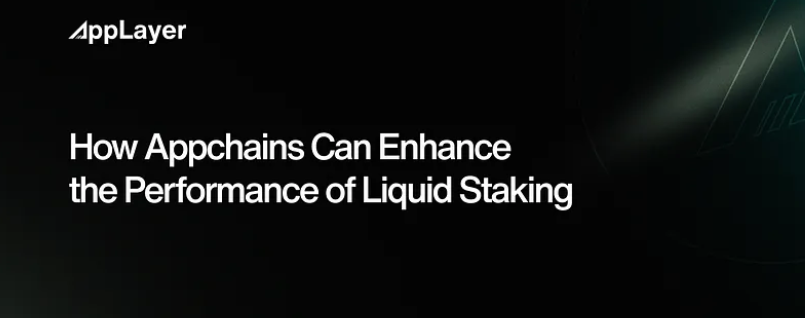With traditional staking, once tokens are locked up, you can’t use them in any other transaction until they are unlocked. However, with liquid staking, you get proxy tokens representing the tokens you’ve locked up. You can then use those proxies for other transactions, such as paying people, lending for yield or collateralizing a loan.
Essentially, this creates more liquidity in a system, which is partly why liquid staking’s TVL reached $63.2 billion in March 2024. Several liquid staking platforms have popped up, with Lido and Rocket Pool standing out. Accordingly, let’s dissect the success drivers, the challenges in the broader liquid staking space and the blockchain features that can address them:
What has driven liquid staking’s success?
Customizable PoS mechanisms
The Proof-of-Stake consensus mechanism birthed staking. However, the earliest iterations of this mechanism didn’t necessarily encourage liquid staking. As prominent smart contract platforms like Ethereum started accepting deposits from aspiring validators, other blockchains furthered PoS and tweaked it to attract more validators.
Firstly, this trend creates more places for users to go if they want to participate in staking. Secondly, the birth of more PoS chains creates competition over who can offer the most attractive staking experience. This may initially manifest in offering higher reward percentages, but there’s a feasible limit for all these chains.
Eventually, the attention is turned to how the technology simplifies the staking process, how accessible and democratic it is, etc. One significant demand here would be the creation of smart contracts that can handle the delegation of staking so that smaller investors can participate in a pool with the same level of transparency they’d have if they were staking by themselves.
DeFi applicability
The existence of numerous DeFi apps with pools serving various token combinations has helped boost demand for synthetic/proxy tokens that can be used to access these services. When a user maintains liquidity through new tokens minted to represent their staked tokens, they can:
- Trade on DEXs
- Provide liquidity in DEX pools serving specific token pairs
- Deposit them in a lending pool to earn interest
- Use them as collateral to borrow
DEXs, in particular, also play a crucial role in advancing liquid staking since they are a secondary distribution point for synthetic tokens once minted. People go there to buy them for exposure to the underlying token and other purposes. This helps in price discovery and gets them into the hands of those who didn’t stake tokens via the liquid staking platform.
Strategic support services
For any new staking aspirant, there are two primary questions, “Where do I stake?” and “What do I do with the synthetic tokens I get?” Some people already do tons of research and devise a clear investment strategy for maximizing returns, but others aren’t on that level.
A liquid staking platform can provide options for the initial staking phase and the phase after synthetic token minting. We’ve already seen some minor forms of value addition, such as the restaking vaults associated with Lido and curated by entities like Steakhouse Financial, MEV Capital, P2P and Re7 Labs.
Such players have helped attract more people to the liquid staking foray by simplifying and subsidizing the creation and execution of investment strategies, particularly those involving synthetic tokens.
Challenges and risks in liquid staking
Delegation risks
In liquid staking, you usually have to submit your tokens and trust a specific validator or an entity overseeing a group of validators to keep everything up to standard. And even though there are non-custodial options, the underlying validators can diminish returns if they have multiple downtime episodes.
They may not act in a way that attracts penalties, slashing or bans, but still face widespread load shedding/power outage or a natural disaster that temporarily pauses their activities. Therefore, you need to trust in a liquid staking entity’s ability to recover quickly.
Smart contract flaws
While many liquid staking smart contracts have enjoyed multi-million-dollar security audits, bug bounties and expert reviews, they aren’t all entirely flawless. Someone could discover a vulnerability in one and exploit it, causing financial loss.
Market fragility
Most synthetic tokens minted for those who stake may experience low trading volume and fluctuating demand. So, just like stablecoins, their value may not always be exactly 1:1 with the underlying asset. This may not be an issue until an extreme market event occurs.
For example, if many people sell the synthetic token simultaneously to cover margin calls or pivot into a more lucrative trade, the token could drastically lose value, leaving other holders at a loss. Even when this hasn’t happened, knowing that it can happen makes some people less likely to hold the synthetic token and transact with it, which could dampen its utility.
Centralization risks
As a liquid staking platform grows, it may gain control over a considerable amount of the underlying blockchain’s native token. This puts it in a better position to impose changes that benefit a minority within its ecosystem and unduly influence development efforts on the broader blockchain.
This often starts in simpler forms, like gaining enough bargaining power to offer lower reward percentages on delegated staking. However, it can quickly escalate into moves like favoring specific partners that offer lucrative deals on reinvesting synthetic tokens, irrespective of their operational standards.
The people who started the platform and invested significantly in the initial infrastructure and marketing may rush to recoup at the expense of smaller investors and the overall improvement of the platform. They may even sideline prospective partners with long-term potential because they haven’t been offered incentives that allow them to break even and profit much sooner.
How AppLayer pushes liquid staking further ahead
To understand how AppLayer can contribute to the liquid staking trend, we need to examine how our technology enhances success drivers and while mitigating risks. We also need to understand why some liquid staking platforms are more successful than others.
For instance, Lido takes first place with a TVL of $32.6 billion, while Rocket Pool is second with $4.15 billion locked. For context, Lido is present on five chains, while Rocket Pool is on only one. This shows just how much of an advantage your platform can gain from being on multiple chains.
Accordingly, AppLayer has integrated EVMOne and EVMC libraries, making it easier to import Solidity smart contracts and deploy them with minimal adjustments. This means that if you have a liquid staking experiment or mature service on a chain like Ethereum or another EVM-compatible chain, you can easily transfer it to any AppLayer appchain and provide that same service.
This ability to rapidly scale a liquid staking service while maintaining the quality of the user experience also bodes well for the synthetic token’s liquidity, making it less vulnerable to market shocks.
AppLayer’s appchain approach can also help lessen centralization risks. Firstly, it enables builders to have separate appchains, each having unique validator rules. This ensures that large investors can’t easily co-opt a validator pool since the participants are free to direct their resources toward another chain with fairer, more profitable validator conditions.
AppLayer is also ideal for addressing the strategic support services aspect of liquid staking. Currently, it’s not that easy to find a service where you can submit native token A and have part of it converted into native tokens B and C so that you can stake on chains A, B, and C from a single wallet.
You’ll also struggle to find a smooth way to use synthetic tokens sA, sB and sC across chains A, B & C, which limits the flexibility in your restaking/reinvesting strategies. Luckily, AppLayer’s chain abstraction enables all appchains native to our ecosystem to communicate by default.
This native bridging can help you realize a platform where you can handle cross/multi-chain staking. And since we also offer an external bridging solution, synthetic tokens within our ecosystem can spread out to DeFi apps and other dApps on different chains beyond the AppLayer network.
Lastly, AppLayer can achieve 400,000 TPS, which is extremely important if you want to execute cross-chain staking and DeFi strategies without getting caught out by price movements. It particularly helps synthetic tokens become more accepted as a medium of exchange since they can be moved faster than their price fluctuates.
Wrapping Up
Any efforts to advance liquid staking should consider the complementary features that enable more complex investment strategies and the measures that preempt centralization. AppLayer champions the perfect balance between collaborative development and autonomous delivery.
We aim to increase the extent to which builders can benefit from each other when creating and enhancing applications while ensuring they can customize the way they serve clients, so come build the future of liquid staking on AppLayer.
About AppLayer:
AppLayer is a C++ based Ethereum scaling solution where developers can deploy Solidity smart contracts and C++ programmed stateful pre-compiles as smart contracts. In AppLayer, Solidity smart contracts are 10 times faster than those in Golang-based competing networks, and stateful pre-compiles are 65 times faster.
 English
English
 Deutsch
Deutsch
 Español
Español
 Français
Français
 Português
Português
 日本
日本
 한국인
한국인
 Türkçe
Türkçe
 Русский
Русский
 Tiếng Việt
Tiếng Việt














